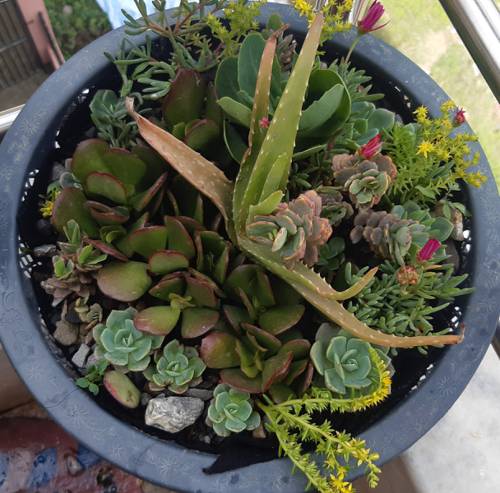
FAQ About Scentless Indoor Plants for Sensory-Sensitive Homes

What are some examples of scentless indoor plants ideal for sensory-sensitive environments?
Some examples of scentless indoor plants perfect for sensory-sensitive environments include the ZZ plant (Zamioculcas zamiifolia), spider plant (Chlorophytum comosum), Boston fern (Nephrolepis exaltata), and peace lily (Spathiphyllum). These plants are known for being relatively easy to care for while also not releasing noticeable odors.

Why are scentless plants important for sensory-sensitive homes?
Scentless plants are important for sensory-sensitive homes because people with sensory sensitivities can be easily overwhelmed or irritated by strong smells. These sensitivities can affect comfort and focus, making scentless plants a safer and more manageable choice for creating a calm and pleasant indoor environment.

How do I care for a ZZ plant in a sensory-sensitive environment?
To care for a ZZ plant, locate it in a spot with indirect sunlight. Water the plant every two to three weeks, allowing the soil to dry out between waterings. ZZ plants prefer well-drained soil and do not need frequent fertilization. They are very low-maintenance, making them a great choice for sensory-sensitive homes.

Are there any indoor plants that are both scentless and low light tolerant?
Yes, there are several scentless indoor plants that also thrive in low light conditions. The snake plant (Sansevieria trifasciata) and pothos (Epipremnum aureum) are both excellent options. These plants can survive with minimal sunlight and still add greenery to your space without any strong odors.

Can peace lilies thrive in low humidity indoor environments?
Peace lilies can survive in lower humidity environments but they do thrive better with some humidity. If the air in your home is particularly dry, you can increase humidity by misting the plant occasionally or placing a tray of water nearby to evaporate, adding moisture to the air.

What type of soil is best suited for scentless indoor plants?
Most scentless indoor plants prefer well-drained potting mix with good aeration. A general-purpose potting soil that includes components like perlite or vermiculite can work well to provide drainage and prevent waterlogging, which is crucial for the health of most indoor plants.

How often should I water my spider plant?
Spider plants generally prefer to be watered once a week. It's important to allow the soil to dry out between waterings to prevent overwatering, which can cause root rot. During the winter months, you may need to water less frequently.

Do indoor ferns require a specific pot type to grow well?
Indoor ferns, such as the Boston fern, prefer pots with drainage holes to prevent water from accumulating at the bottom, which can harm the roots. A breathable pot material such as terracotta is also beneficial as it allows excess moisture to evaporate more easily.

Is it necessary to fertilize scentless indoor plants?
While not absolutely necessary, fertilizing scentless indoor plants can promote healthier growth. Use a balanced, water-soluble fertilizer every month during the growing season (spring and summer). Be sure to dilute the fertilizer according to package instructions to avoid over-fertilization.

Can succulents be considered scentless indoor plants?
Yes, most succulents are considered scentless. They have minimal odor and require infrequent watering. Popular varieties such as jade plants, echeverias, and aloe vera are excellent options for fragrance-free homes.

Do pothos plants purify the air effectively in homes?
Pothos plants are known for their ability to purify the air by removing toxins such as formaldehyde and benzene. This quality, combined with their easy maintenance, makes them a popular choice for improving indoor air quality in homes, especially beneficial in closed or poorly ventilated spaces.

How do I propagate a peace lily?
To propagate a peace lily, it’s best to use the division method. When the plant is mature, carefully remove it from its pot and gently separate the mother plant from its offshoots, ensuring each division has its own roots. Plant each division in a new pot with fresh soil to start a new plant.

What are the light requirements for a snake plant?
Snake plants are highly adaptable and can grow in a wide range of lighting conditions, from low light to bright, indirect sunlight. However, they tend to thrive best in moderate to bright indirect light. Avoid placing them in direct sunlight for prolonged periods, as this can cause leaf burn.

Can indoor plants help reduce stress in sensory-sensitive individuals?
Yes, indoor plants can help reduce stress for sensory-sensitive individuals by contributing to a calming environment. The presence of greenery has been shown to have psychological benefits, including reducing anxiety and improving mood, which can be particularly beneficial in homes where individuals are sensitive to sensory stimuli.

Are all indoor plants with no noticeable scent safe for pets?
Not all scentless indoor plants are safe for pets, as some can be toxic if ingested. For pet-friendly options, consider plants like the spider plant or bamboo palm. Always check plant toxicity and consult with a veterinarian if you have concerns about specific plants.

How can I enhance the growth of my no-scent indoor plants?
To enhance the growth of your no-scent indoor plants, ensure they are placed in appropriate lighting conditions and consider occasional fertilization. Regularly clean the leaves of dust, ensure proper watering, and inspect for any pests or diseases. This care will help your plants thrive and maintain optimal health.

Can houseplants improve indoor air quality without emitting scents?
Yes, houseplants can improve indoor air quality by filtering out common pollutants like volatile organic compounds (VOCs) without emitting scents. Plants like spider plants, Boston ferns, and peace lilies are particularly effective at purifying air.

Is there a difference between low-maintenance and scentless indoor plants?
While many low-maintenance plants are scentless, these terms describe different characteristics. Low-maintenance refers to plants that require minimal care in terms of watering, pruning, and fertilization. Scentless indicates the plant does not emit noticeable odors. Some plants can be both low-maintenance and scentless.

What should I do if a normally scentless plant starts to emit an odor?
If a normally scentless plant begins to emit an odor, check for signs of overwatering, root rot, or mold in the soil. These conditions can cause unpleasant smells. Remove any decaying leaves, adjust your watering schedule, and ensure proper drainage to rectify the issue.

Can artificial scentless plants be a good alternative for sensory-sensitive homes?
Artificial scentless plants can be a great alternative for sensory-sensitive homes, especially if maintenance of live plants is difficult. They require no watering or sunlight and can mimic the appearance of real plants, offering aesthetic benefits without the risk of odors or allergens.
